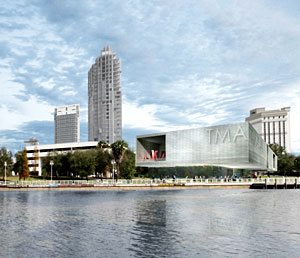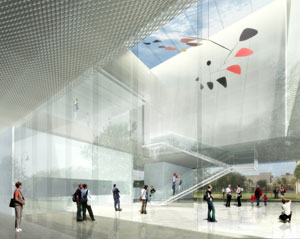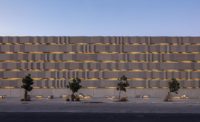Four times could be the charm for the Tampa Museum of Art, in Tampa Bay, Florida. The museum’s building committee voted unanimously in May to forge ahead with Stanley Saitowitz/Natoma Architects’ design for a new facility to be located on the site of its existing home, which will be demolished. The committee chose the San Francisco-based architect last November. Trustees had nixed a design by Rafael Vinoly in 2004, citing concerns over that project’s estimated cost, as well as two other schemes.


Saitowitz/Natoma’s 68,000-square-foot building, the first phase of a possible larger structure, takes the form of side-by-side horizontal cubes—a two-story cube with tall ceilings containing galleries, and a three-story cube for support spaces—connected by a steel bridge and cantilevered over a glass-enclosed podium. The cantilever helps elevate most of the museum above the city’s flood plain and provides shading for a park and sculpture garden.
The curtain wall of the cubes will be composed of two layers of perforated metal, with regularly spaced six-inch wide holes, that allow daylight inside and views out. Saitowitz has described this surface as “rippled and shimmering” like the Tampa waterfront that his building faces. LED lights, sandwiched between the metal layers, will project changing colors at night. Artists will also be able to control this lighting for site-specific installations.
The museum’s interior will feature a large lobby with a 40-foot-by-40-foot sky-lit atrium. Galleries wrap around the atrium, enclosed by the same perforated metal as the facades. A landscaped green roof will provide sustainability benefits as well as space for the museum to host functions. As reported elsewhere on ArchitecturalRecord.com today, the first phase will cost $32.5 million. The museum is raising $25 million toward capital costs and its endowment; the city, moreover, has pledged $17.5 million in Community Investment Tax bonds. Construction is expected to begin early next year with completion by 2009.



Post a comment to this article
Report Abusive Comment